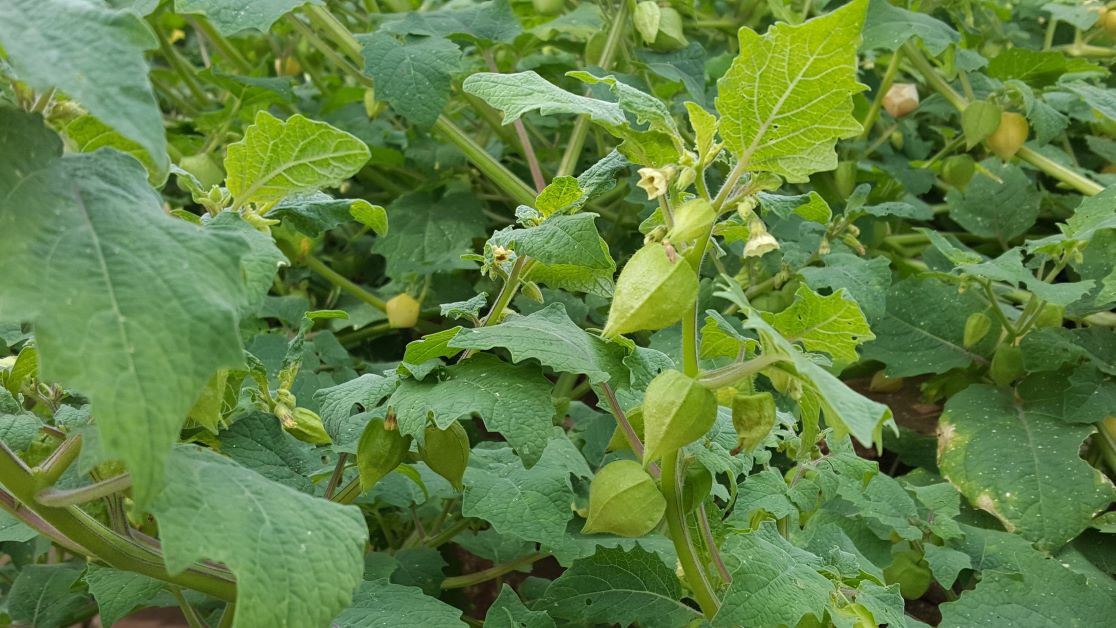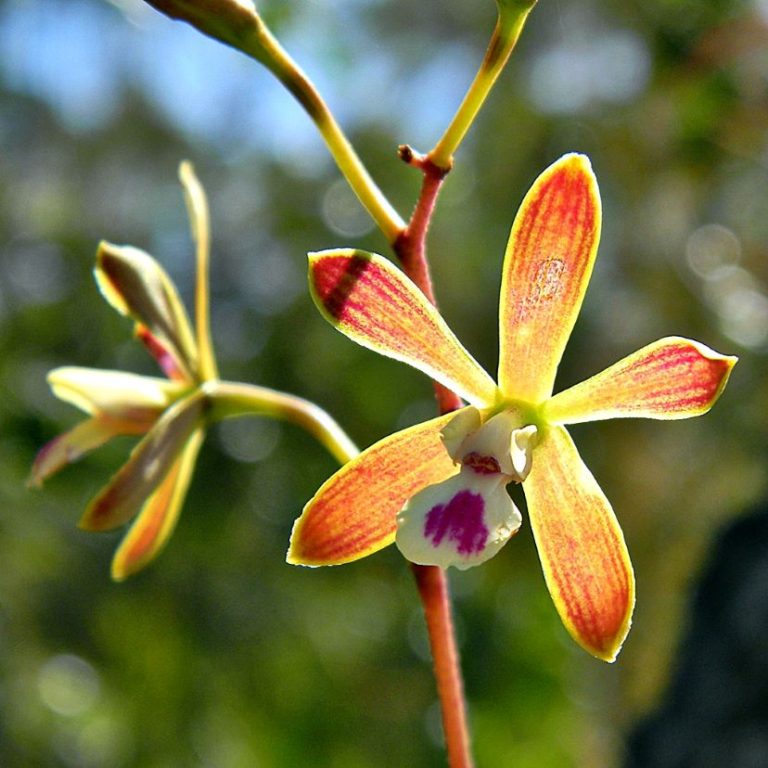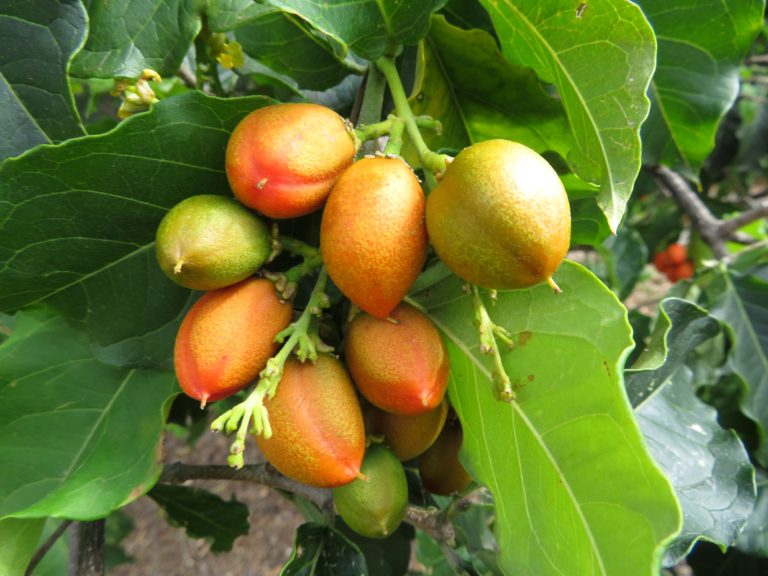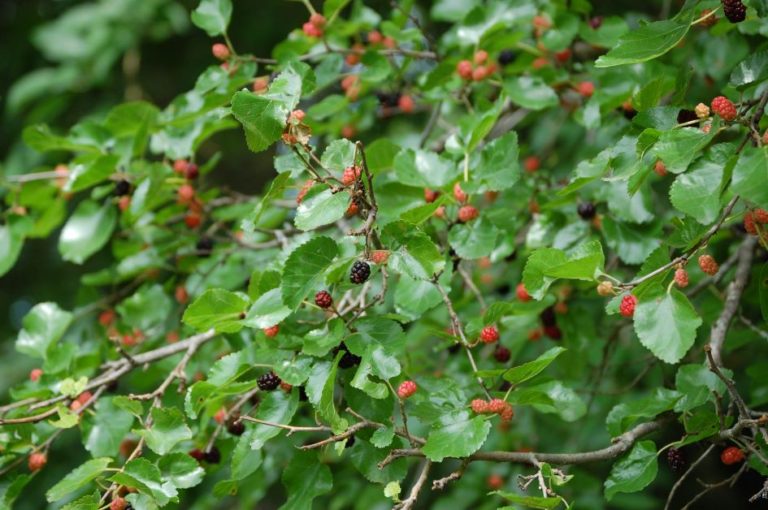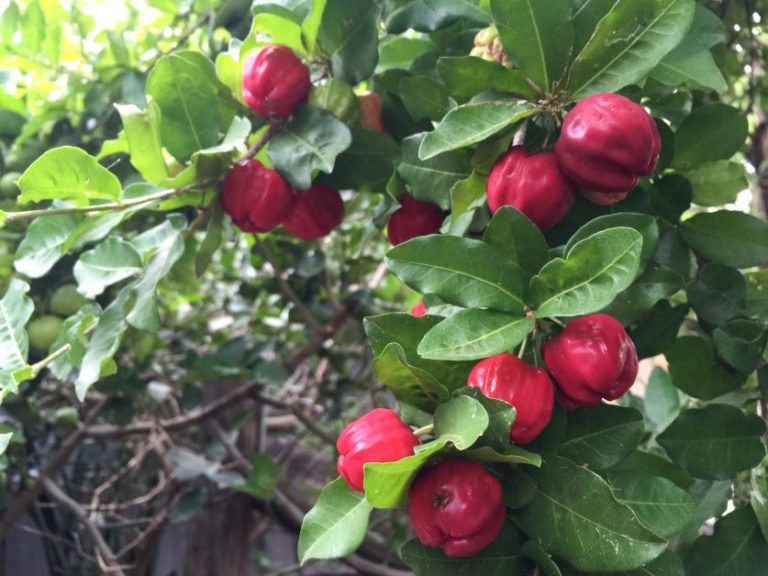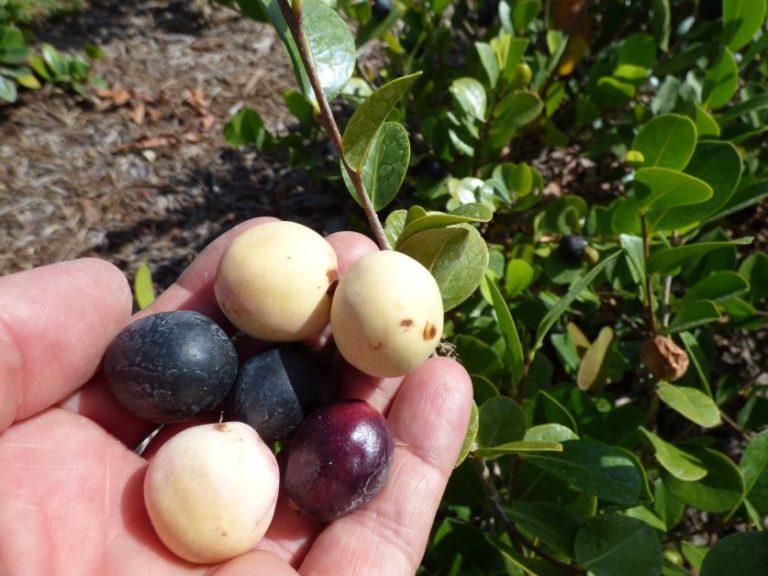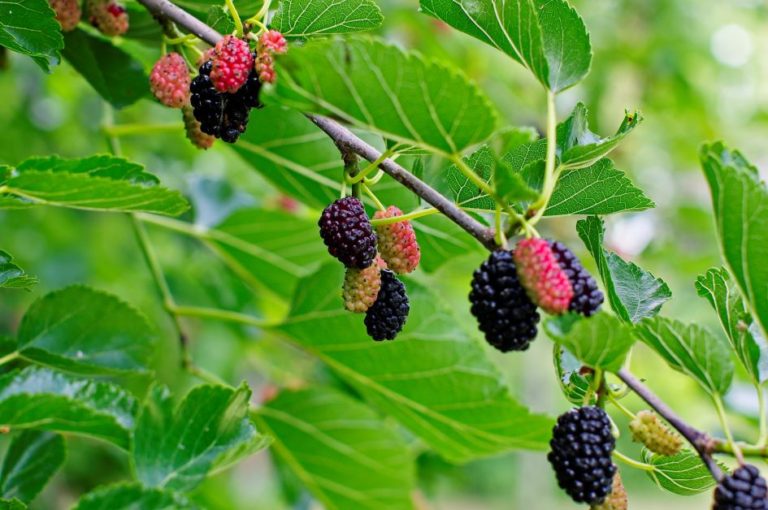How to Grow Ground Cherries in Florida
Are ground cherries a fruit or a vegetable? How do you use ground cherries? What do ground cherries taste like? You might have a lot of questions about this plant – they aren’t super common in the United States. In fact, you may have never heard of them.
Once you know a little bit about this versatile (and delicious) fruit, I promise that you’ll want to add it to your garden this season.
What are Ground Cherries?
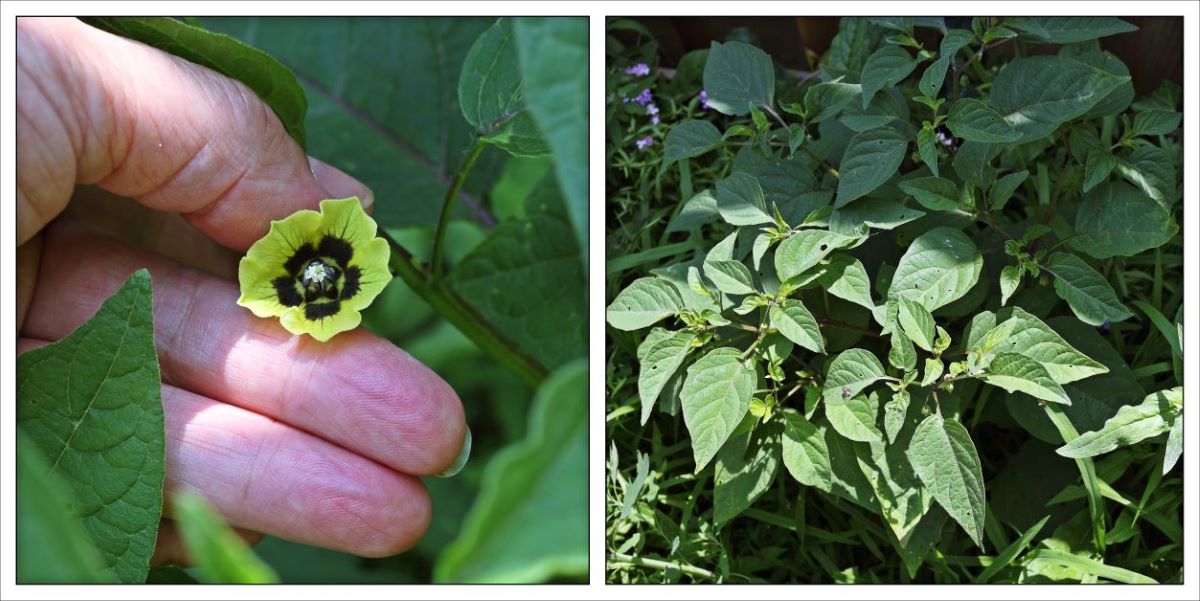
Native to Mexico, Latin America, and Florida, ground cherries are a member of the nightshade family. This makes them a relative of tomatoes, potatoes, eggplants, and peppers.
Ground cherries are low-lying herbaceous plants with green foliage and yellow flowers. When pollinated, the yellow flowers form into a berry-sized fruit that’s covered in a papery husk. Unlike some Florida native fruit, ground cherries are sweet enough to eat straight from the plant. They’re also a popular ingredient in salsas, sauces, desserts, and jams.
Ground Cherries Vs. Gooseberries
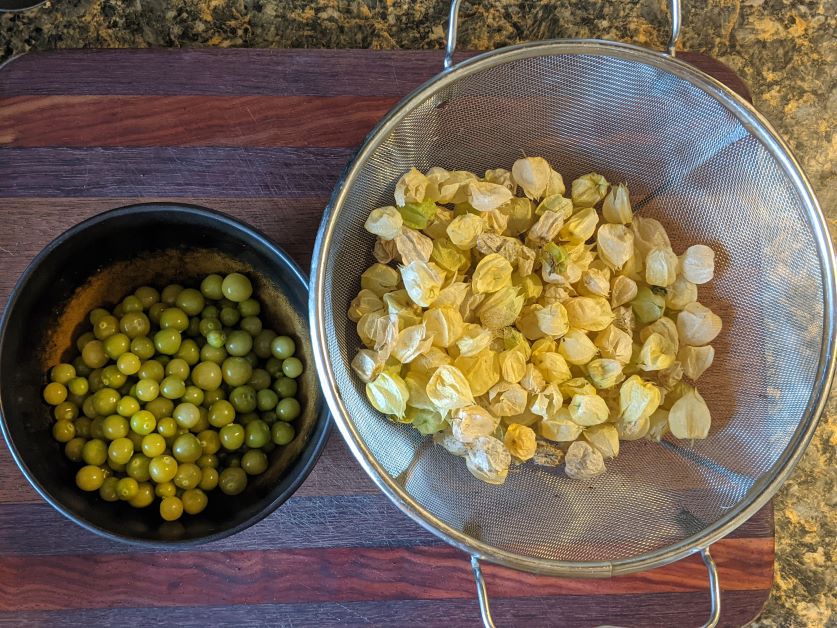
A lot of people confuse ground cherries for gooseberries, but they aren’t the same thing or even members of the same family – gooseberries are a member of the Ribes family, which makes them related to currants. Gooseberries also lack the signature papery husk that surrounds the ground cherry. They look like grapes more than anything else.
A common name for the ground cherry is the cape gooseberry, so that’s why people get ground cherries and gooseberries mixed up.
Remember – a ground cherry is the same as a cape gooseberry, but a cape gooseberry is not the same as a regular gooseberry. A little confusing, I know.
Ground Cherries Vs. Tomatillo
Unlike gooseberries, ground cherries and tomatillos ARE members of the same family – Physalis. They aren’t the same thing, though.
It’s true that the tomatillo and the ground cherry are each enveloped in a papery husk, the similarities stop there. Tomatillo plants are huge and ground cherry plants aren’t. Ground cherry fruits are also much smaller than a tomatillo. Tomatillos usually get to be the size of a small tomato while ground cherries get to be the size of a grape. Ground cherries taste nothing like tomatillos, either. Tomatillos are tart and sour and not sweet at all, and ground cherries are mostly sweet and just a little bit tart.
Are Ground Cherries Invasive?
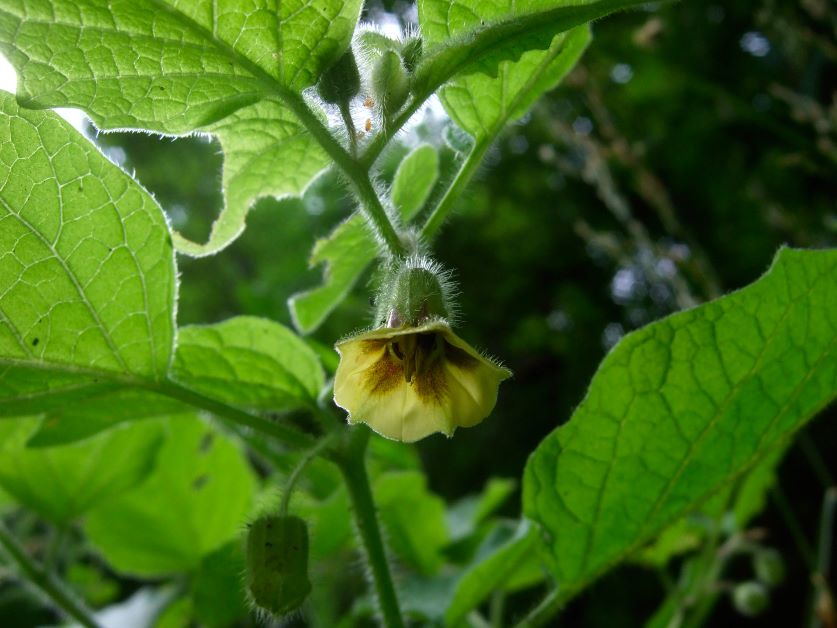
Ground cherries are so easy to grow in Florida that some gardeners find them to be a nuisance. When a ground cherry is ripe, it falls to the ground. Because 1 plant can put out so much fruit, it’s easy to miss these fallen ground cherries when you’re harvesting. These fallen berries end up germinating and grow into their own plant, almost like weeds. I call these self-seeded plants “volunteers.” Personally, I love them. I may have to take time weeding out unwanted plants from time to time, but I’d much rather grow a plant that thrives than one that’s hard to keep alive. The extra fruit is nice, too.
Are Ground Cherries Annual or Perennial?
Ground cherries can be annual or perennial, depending on where you live. If you live in a cooler climate that experiences frost, then they’re annual. If you live in an especially hot locale, then they’re perennial.
Ground cherries are annual in South Florida, for instance, but a perennial in Central Florida and above.
Ground Cherry Growing Conditions
Temperature
Ground cherries can handle temperatures of up to 85F, 60 to 75F is ideal. Some varieties of ground cherry are more heat tolerant than others. Generally, you can grow ground cherries in USDA zones 4 and above.
Ground cherries don’t survive in cold temperatures and are very sensitive to frost.
Light
6-8 hours of full sun is best but some dapples shade can help if you’re growing ground cherries in an especially hot climate.
Water
Ground cherries like a moderate amount of water. Keep the soil moist but not soggy, and water them the same as you would a tomato plant.
Soil
Ground cherries are wild plants and aren’t too particular about their soil, as long as it’s well-draining. They prefer fertile and loamy soil but will grow in sandy soil, too. The ideal soil pH range for ground cherries is 6.0 to 6.8.
Fertilizing
Fertilizing isn’t absolutely necessary when growing ground cherries, but it can help improve your yield. Amend your soil with compost about 2 weeks before planting your ground cherries. When flowers start to form, feed your plant organic fish fertilizer and then once more about 2 weeks later.
Spacing
Ground cherries are a sprawling plant, so it’s best to give them some room. Keep each plant 2 feet apart. You can grow your ground cherry in a tomato cage to stop it from growing so wide. A tomato cage will also help keep fruit off the ground (and away from pests).
Pruning
You don’t need to prune ground cherries.
How to Grow Ground Cherries from Seed
Ground cherries are easy to grow, which means you have some options when starting from seed. You can either direct sow, or you can start your seeds in cups. I prefer starting my seeds in cups because it helps me keep a closer eye on the progress of my seedlings. It’s also easier for me to pick the hardiest plants to keep and which should be culled.
Where you live will determine if you should start your ground cherries indoors or out. If you’re a gardener in a cool weather climate, then you’ll want to start your ground cherries indoors about 6 weeks before your last frost.
Since I’m a Florida gardener, I start my seeds outdoors because our warm weather allows it. I use my carport as a sort of seed nursery — the carport gives my seedlings some protection from the harshest rays but still lets my them get indirect sunlight and fresh air.
To plant your ground cherries from seed:
- Fill seed starter cups with high-quality potting mix. I like to use peat starter cups because they’re better for the environment but plastic is fine, too.
- Plant a seed in each cup about 1/4 inches deep. Plant more seeds than you think — ground cherries have a low germination rate.
- Water your seeds in.
- Keep your seeds warm (75F-80F) and in a sunny spot. Continue to water your seeds, keeping the soil moist but not soggy. Ground cherries take up to 2 weeks to germinate.
- Once your seedlings are a few inches long and have 2 sets of true leaves, then transplant them into the ground, raised bed, or container. Plant the seedlings a bit deep, up to the first set of true leaves.
- Water your freshly transplanted ground cherries.
When to Plant Ground Cherries in Florida
Ground cherries and tomatoes share the same planting calendar.
[table id=8 /]
Can You Grow Ground Cherry in a Container?
Yes! Ground cherries grow well in containers. Growing ground cherries in pots is a great way for northern gardeners to protect their plants from unexpected cold snaps. If the weather is forecasted to be 40F or lower, then bring your ground cherry container inside.
Grow your ground cherry in a pot that’s at least 1-gallon, and make sure the drainage holes are drilled out at the bottom. Fill your pot with organic potting mix with a little bit of perlite mixed in to improve drainage.
When to Harvest Ground Cherries
Ground cherries are one of the fastest-growing fruits around — it only takes 70-80 days to go from seed to harvest.
Ground cherries fall off of the plant when they’re ripe. On one hand, this makes it easy to tell when a ground cherry is ready for harvest. On the other, it does mean you need to hunt around on the ground for fallen berries, which can be a pain. Mulch around your plant to put a barrier between your fruit and the soil (where pests like to live).
Ground cherry husks also turn from their original opaque green color to papery and brown as the fruit ripens. If you find a ground cherry fruit with a papery husk, give it a very gentle tug. If it comes off of the plant with little resistance, then the fruit is ripe.
Most varieties of ground cherries start off with green fruit that gradually change to yellow or orange as it ripens.
Best Ground Cherries Seeds for the Home Gardener
Aunt Molly’s – super sweet; high pectin content, making them great for baking and jams; grows well in hanging baskets
Pineapple Tomatillo – sweet and tangy; tastes a little like pineapple; often used in salsas and chutneys
New Hanover – heralded as one of the best-tasting ground cherry varieties available; great for eating fresh from the plant
Florida Native Ground Cherries
While there are 9 species of ground cherry native to Florida, most of them look a lot alike and even expert horticulturists can have a hard time telling them apart. Some of the most common Florida native ground cherries include:
Physalis walteri /Physalis vicosa (Walter’s Ground Cherry, Starhair Ground Cherry)
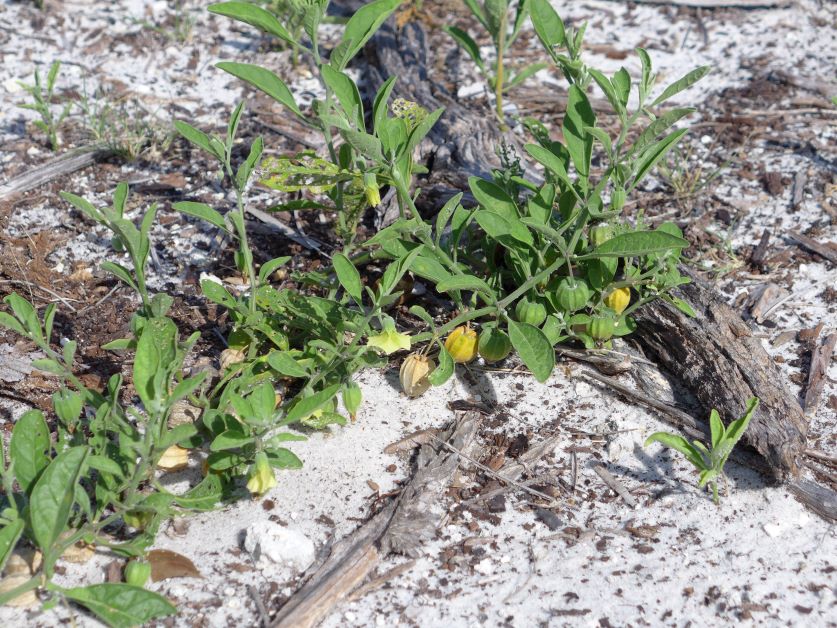
Characteristics: low-lying; 6 to 12 inches tall; yellow flowers that oftentimes have a purple center (but not always); plant is covered in thin hairs; fruits in summer and fall
Physalis angulata (Cutleaf Ground Cherry, Angular Winter Cherry, Wild Tomato, Cape Gooseberry)
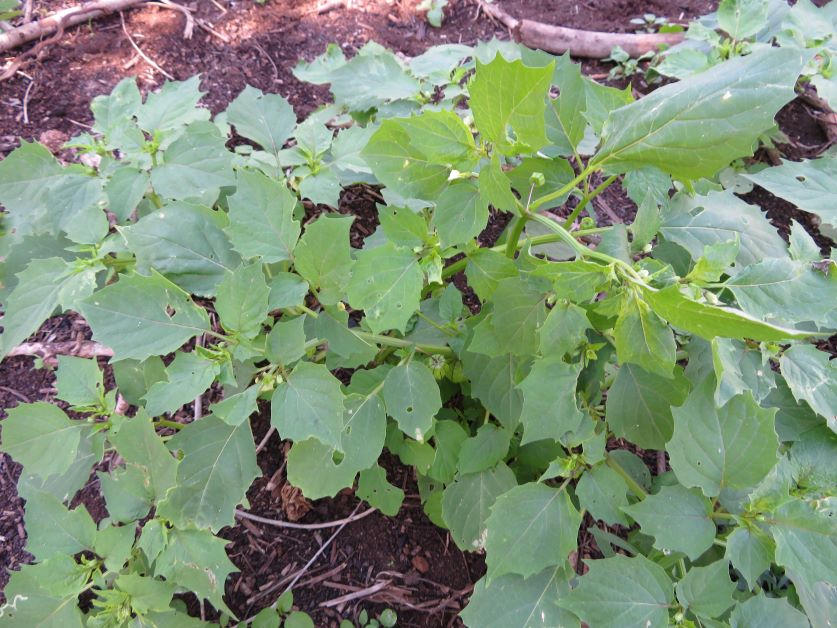
Characteristics: sprawling; bigger than Physalis walteri; can grow to 6 feet tall; pale yellow flowers; wide leaves with toothed edges; long stems
Physalis angustifolia (Coastal Ground Cherry)

Characteristics: long, skinny, smooth leaves; grows to be about 2 feet tall; found on beaches, sand dunes, and coastal scrublands
Physalis heterophylla (Clammy Ground Cherry)
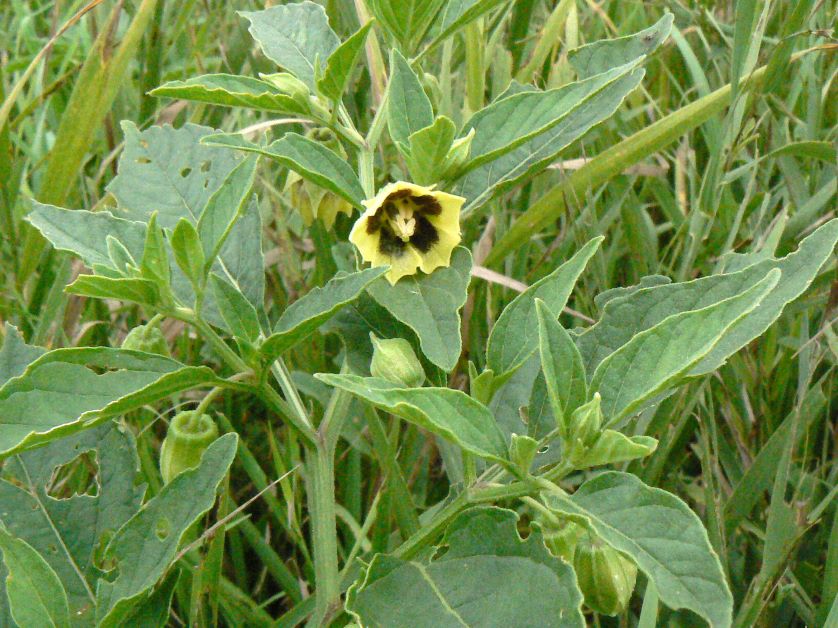
Characteristics: medium-sized at about 3 feet tall; oval leaves covered in hairs; greenish-yellow flowers with purple center; grows in fields and woods
Ground Cherry Troubleshooting
Generally speaking, ground cherries don’t have many problems with pests or diseases. If you do encounter an issue, it will more than likely be one of the pests or diseases below.
Ground Cherry Pests
Flea Beetles
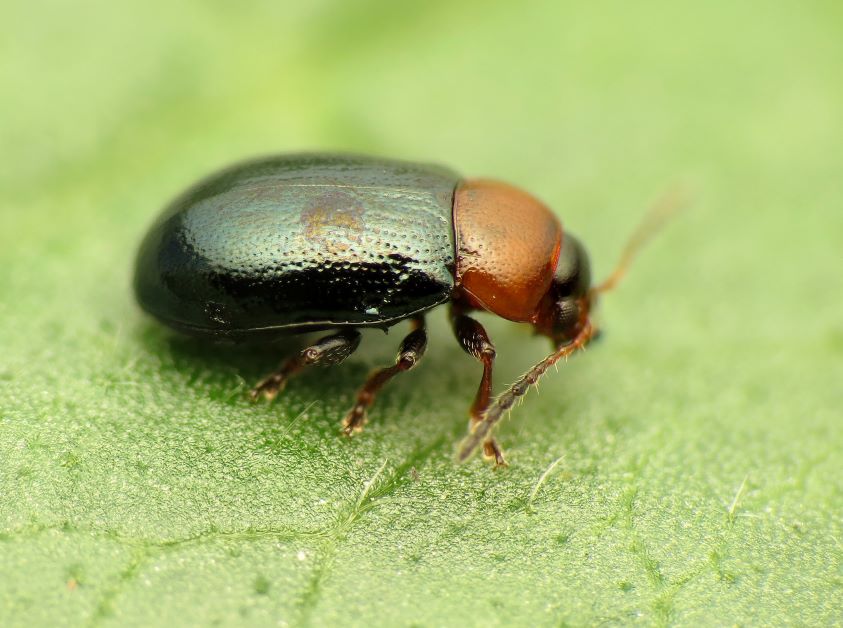
If you find tiny holes in your ground cherry leaves, you may have flea beetle problem. As per their name, flea beetles are high jumpers.
Keeping your garden weeded and tidy can help prevent a flea beetle infestation. If you find yourself on the losing side of a flea beetle battle, put out a yellow sticky trap.
Whiteflies
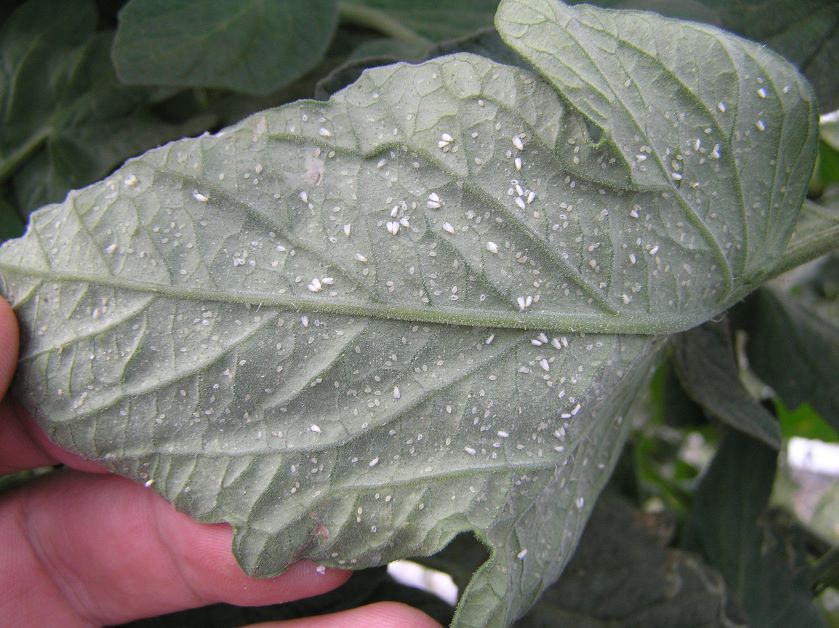
Whiteflies are soft-bodied insects, similar to aphids. They use their mouthparts to pierce the leaves and stems of your plant to suck its nectar. Wilting, yellow, and dropping leaves are signs that you might have whiteflies.
Spray the undersides of your leave with a blast of your garden hose to kill any hidden whiteflies and their eggs. You can also use a whitefly trap.
Colorado Potato Beetles
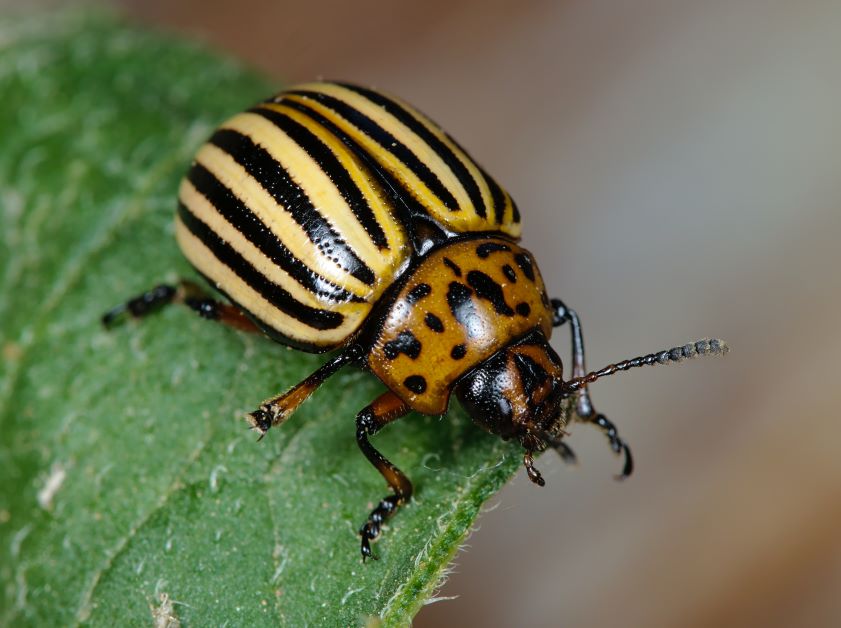
It’s easy to notice a Colorado potato beetle infestation because they’re so colorful. These beetles lay orange eggs on the undersides of leaves and chew holes in your plant’s foliage.
Colorado potato beetles are resistant to most insecticides. The most effective way to get rid of these hard-bodied insects is to remove them by hand. Put on a rubber glove, dip your fingers in Vaseline, and touch any potato beetles you find. The Vaseline will make the beetles stick to the glove, making them a lot easier to capture and kill.
Ground Cherry Diseases
Root Rot
The most common ground cherry disease is root rot. A plant can contract root rot if their soil is consistently soggy. Learn the signs of overwatering and always plant your ground cherries in well-draining soil.
Are Ground Cherries Poisonous?
Like all nightshades, ground cherry leaves (and husks) are poisonous. Unripe ground cherry fruits are also poisonous, so only eat them when they’re ready. If you happen to get a bitter ground cherry, it’s best to spit it out. Some species of wild ground cherries are bitter until they’re cooked. If your ground cherries are still bitter after cooking, don’t eat them and don’t harvest from that plant in the future.
Horse owners should probably skip growing ground cherries altogether — unripe ground cherry fruits can be fatal for horses.
Featured Photo Credit: Protopian Pickle Jar
Disclaimer: Offbeet-Gardener is reader-supported. At no additional cost to you, I may receive commissions from purchases made through links in this post.

